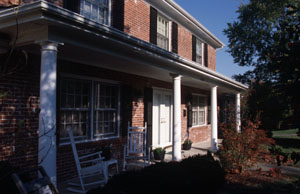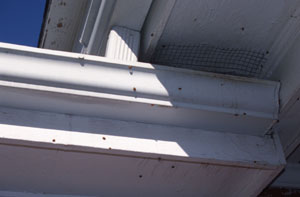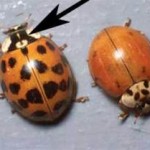Minneapolis MN Asian Beetles Pest Control
Asian Lady Beetles Part 1
Asian Lady Beetles are a common pest to many homes in Minnesota. During fall when temperatures drop, they will start searching for a place to over-winter. You may notice them congregating during the day on the exterior, concentrated on the south & west side of the structure where the sun is most prevalent. At night they will find cracks & crevices to get inside. During the winter months the insects will go into a dormant state.
Getting Rid Of Asian Lady Beetles In Minnesota
However, the warmth of a house or a structure can prevent a dormant state, causing them to stay active throughout the winter inside. This is why you may find these insects in your home throughout the winter.
For the most part, Asian beetles are beneficial predators that eat aphids, scale, insects, and many other pests that injure plants in gardens, landscapes and agricultural settings. However, in many places the multicolored Asian lady beetle has become a household pest. This beetle feeds on aphids and other soft-bodied insects that dwell on crops and trees. Soybean crops are reportedly a favorite of Asian beetles and when the soybean crops get harvested in late summer/early fall, watch out! Asian beetles will be migrating to find a new place to live and breed. Maybe your home!
Multicolored Asian Lady Beetles
Lady beetles feed on aphids and other soft-bodied insects that can damage plants in agricultural crops, gardens and landscapes, making them beneficial insects to farmers and gardeners.
Lady beetles feed on aphids and other soft-bodied insects that can damage plants in agricultural crops, gardens and landscapes, making them beneficial insects to farmers and gardeners. However, one lady beetle species, the multicolored Asian lady beetle, Harmonia axyridis (Pallas), has become very troublesome in Minnesota. Also known as the Asian lady beetle, Halloween lady beetle, and Japanese lady beetle, these insects cluster around buildings in large numbers during fall as they search for protected sites to overwinter.

Swarms of lady beetles typically fly to buildings in September though November depending on locale and weather conditions.
Studies have shown that Asian lady beetles are attracted to illuminated surfaces. They tend to congregate on the sunnier, southwest sides of buildings illuminated by afternoon sun. Homes or buildings shaded from afternoon sun are less likely to attract beetles. House color or type of construction (concrete, brick, wood/vinyl siding) is less of a factor for attraction than surface contrast.
Contrasting light-dark features tend to attract the beetles — dark shutters on a light background, light shutters on a dark background, windows edged with light-colored trim, gutters and downspouts on contrasting siding, etc. Dwellings near woods or fields are especially prone to infestation, although those in other locations can be infested as well.

Beetle flights are heaviest on sunny days following a period of cooler weather, when temperatures return to at least the mid-60s. Consequently, most flight activity occurs in the afternoon and may vary in intensity from one day to the next.
Once the beetles alight on buildings, they seek out crevices and protected places to spend the winter. They often congregate in attics, wall cavities, and other protected locations.
Asian Lady Beetles Part 2
Where did they come from?
The multicolored Asian lady beetle is a native of eastern Asia. These insects were released by the U.S. Department of Agriculture in California in 1916 and in 1964 -1965 for biological control of pecan aphids. They were also released for additional biological control programs from 1978 through1982 in Connecticut, Delaware, Georgia, Louisiana, Maine, Maryland, Mississippi, Ohio, Pennsylvania, and Washington. Despite these releases, lady beetles were not recovered and they did not appear to become established.
Then in 1988, a population of multicolored Asian lady beetles was found in Louisiana, north of New Orleans. These lady beetles spread quickly throughout the southern and eastern United States. No one knows whether their presence today is due to deliberate releases or accidental introductions.
Multicolored Asian lady beetles were never introduced into Minnesota through deliberate releases, although they did move into the state from nearby areas. They were first sighted in Minnesota in November, 1994. The first report of major infestations around buildings occurred in 1998, and by 2000 the insect was generally distributed throughout the state.
These lady beetles are not and never have been part of any release program in Minnesota.
Identification 
The multicolored Asian lady beetle looks very similar to other lady beetles but is generally larger, about 1/3-inch long. Its appearance is quite variable, ranging from orange to yellow to red or even (rarely) black. This beetle typically has 19 black spots which can vary in appearance from well-defined to no more than faint traces on its wing covers. These lady beetles may also have fewer than 19 spots and some may have no spots at all. Perhaps the most reliable identifying characteristic of the multicolored Asian lady beetle is the prominent black ‘M’-shaped marking behind its head. This ‘M’ can look thick, thin or even broken in appearance.
The immature larvae are alligator-like, and appear similar to other lady beetle larvae. The larvae are blue to black with two orange stripes, and rows of small, spined protuberances on their bodies.
Although multicolored Asian lady beetles can be a nuisance when they occur in large numbers, they do not infest wood, destroy fabrics, eat our food, or damage other property. These lady beetles cannot sting and they are not known to carry disease.
However, there are some problems with multicolored Asian lady beetles. First, some can bite hard enough to break human skin, causing minor, short-lived discomfort. These bites are incidental, as the beetles are presumably searching for moisture or food. Second, they can secrete a strong-smelling yellowish liquid from the joints of their legs, a process called reflex bleeding. This liquid can stain light colored surfaces. Third, exposure to dead lady beetles in buildings can cause allergic reactions in a small number of individuals.
Management
Prevention is the most effective step in managing lady beetles. Check the outside of your home for spaces and cracks that may allow insects easy entry. Lady beetles can fit through openings as small as 1/8 inch in size. Make any necessary repairs by the end of September. This will not eliminate all lady beetles but it can significantly reduce the number entering buildings.
* Seal cracks and spaces around doors, windows and fascia boards. Also check for gaps and cracks where different materials meet, such as brick and wood siding. Seal cracks with caulk, such as silicone, elastometric latex, or silicone/acrylic.
* Seal areas where cable TV wires, phone lines, and other utility wires and pipes, outdoor facets, dryer vents and similar objects enter buildings. Seal with caulk or for larger spaces use polyurethane expandable spray foam, steel wool, copper mesh, or other appropriate sealant.
* Repair or replace damaged window and door screens. Repair or replace damaged screens in roof and soffit vents, and in bathroom and kitchen fans.
* Install door sweeps or thresholds to all exterior entry doors. Install a rubber seal along the bottom of garage doors.
Asian Lady Beetles Part 3
Why do we see lady beetles during the winter?
 Mild, sunny winter days can wake these dormant insects. The warmth will reach them at different rates, depending on where the lady beetles are located within the building, so they do not all become active at the same time. As they wake up, they follow the warmth into the home’s living quarters. Once there, they move towards windows and other sunny areas. Eventually all lady beetles overwintering inside buildings become active. During spring, they try to move outdoors but many remain trapped indoors.
Mild, sunny winter days can wake these dormant insects. The warmth will reach them at different rates, depending on where the lady beetles are located within the building, so they do not all become active at the same time. As they wake up, they follow the warmth into the home’s living quarters. Once there, they move towards windows and other sunny areas. Eventually all lady beetles overwintering inside buildings become active. During spring, they try to move outdoors but many remain trapped indoors.
Despite circumstantial evidence, multicolored Asian lady beetles do not reproduce indoors — all the lady beetles seen inside during winter and spring entered buildings the previous fall.
Hiring a Minnesota pest control expert, is your best bet in getting rid of these overwhelming bugs. They come in huge swarms, and no matter how many you get rid of, more keep coming!



